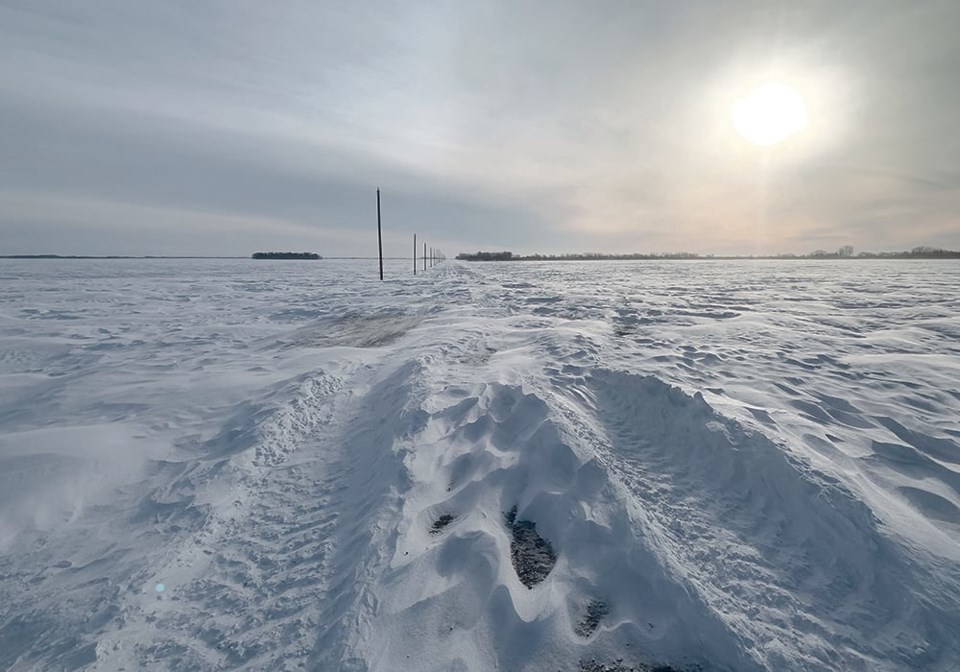SASKATOON — Drought maps show the Canadian prairie region is in far worse shape than it was a year ago heading into spring.
“That area has been under drought the longest and has received the least amount of moisture over the last number of years,” said Trevor Hadwen, agroclimate specialist with Agriculture Canada.
Drought is also worsening in the Peace River region of Alberta and in southern Manitoba, although he isn’t as worried about the latter because that area tends to receive more rain during the summer.
An early-March snowstorm that hit much of central and southern Saskatchewan won’t change the dry outlook.
“If you look at the actual moisture in that snow, it isn’t very much,” said Hadwen.
It delivered about 20 millimetres of moisture to most of the areas where the snow fell. To put that in perspective, the areas with the most severe drought have a precipitation deficit of about 300 mm over the past three years.
“That’s about one year of annual rainfall,” he said.
There was precious little snowfall all winter prior to that one big dump in early March. Most of the southern Prairies had exposed soil, which meant it was losing moisture all winter to evaporation.
What the prairie region needs is good late season snowfall followed by regular spring rain.
So, is that in the cards?
Nobody knows, said Hadwen. Weather models produced by Environment Canada and the U.S. National Oceanic and Atmospheric Administration are inconclusive.
The world is transitioning from an El Nino to a La Nina weather event and that scenario doesn’t provide any good clues on what is about to transpire.
The models agree that it is going to be a warmer-than-normal spring, but when it comes to precipitation, it’s a coin toss.
What is certain is that farmers are entering the 2024 season with much trepidation due to a lack of soil moisture, severely reduced irrigation reservoirs and low dugout levels.
The Canola Council of Canada says farmers might want to reassess their fertilizer needs by soil sampling just before seeding to get an accurate measure of nutrients available to the crop.
When seeding into dry soil, it is best to keep all fertilizer out of the seed row. As well, farmers should stick to seeding at a depth of about one inch.
“Going much deeper than 1.5 inches to chase moisture can result in lower vigour, delayed emergence, uneven stands and more flea beetle susceptibility,” the council said in a recent Canola Watch publication.
Growers should also select fields with low herbicide carryover risk.
“Canola is extremely sensitive to Group 2 herbicide carryover, and carryover of these residual herbicides could be high in fields that experienced a dry summer in 2023,” said the council.
Hadwen is more concerned about livestock producers than crop farmers.
“When you’re dealing with multiple years of drought, the cropland guys aren’t as impacted as the cattle (guys),” he said.
Farmers can still get a good crop off if they get timely rain, even if subsoil moisture levels are dismal.
However, it is hard to replenish dugouts with a spring rain and a couple of summer showers.
He said feed crop supplies are tight due to past droughts, which has driven up prices, and pastures are stressed.
“The farmers have not wanted to purchase feed and have been grazing those pastures fairly hard,” said Hadwen.
“They need some time to rest and recover.”
Irrigators are also in a tough spot. They rely heavily on runoff from the eastern slopes of the Rocky Mountains, which have had below normal snowpack.
Hadwen said the Oldman and St. Mary reservoirs are already very low and will not be replenished this spring. Over half of the water in those reservoirs is used for irrigation.
However, that water is also used for municipalities and industry. There are already a few towns near Pincher Creek, Alta., that are hauling water because their intake pipes are above the water level.
Alberta’s water rights system favours those who have had licenses in place longer than others, which means a farmer might have priority over a municipality.
That has the province contemplating buying licenses from people or paying them not to use their full allotment, he said.
Hadwen said his message to farmers is clear.
“I just encourage producers to continue to be vigilant in water use and to prepare for the possibility of a dry summer,” he said.
“We’re not saying that it’s going to be dry, but there is a good possibility that (it) will be another challenging year for producers.”




